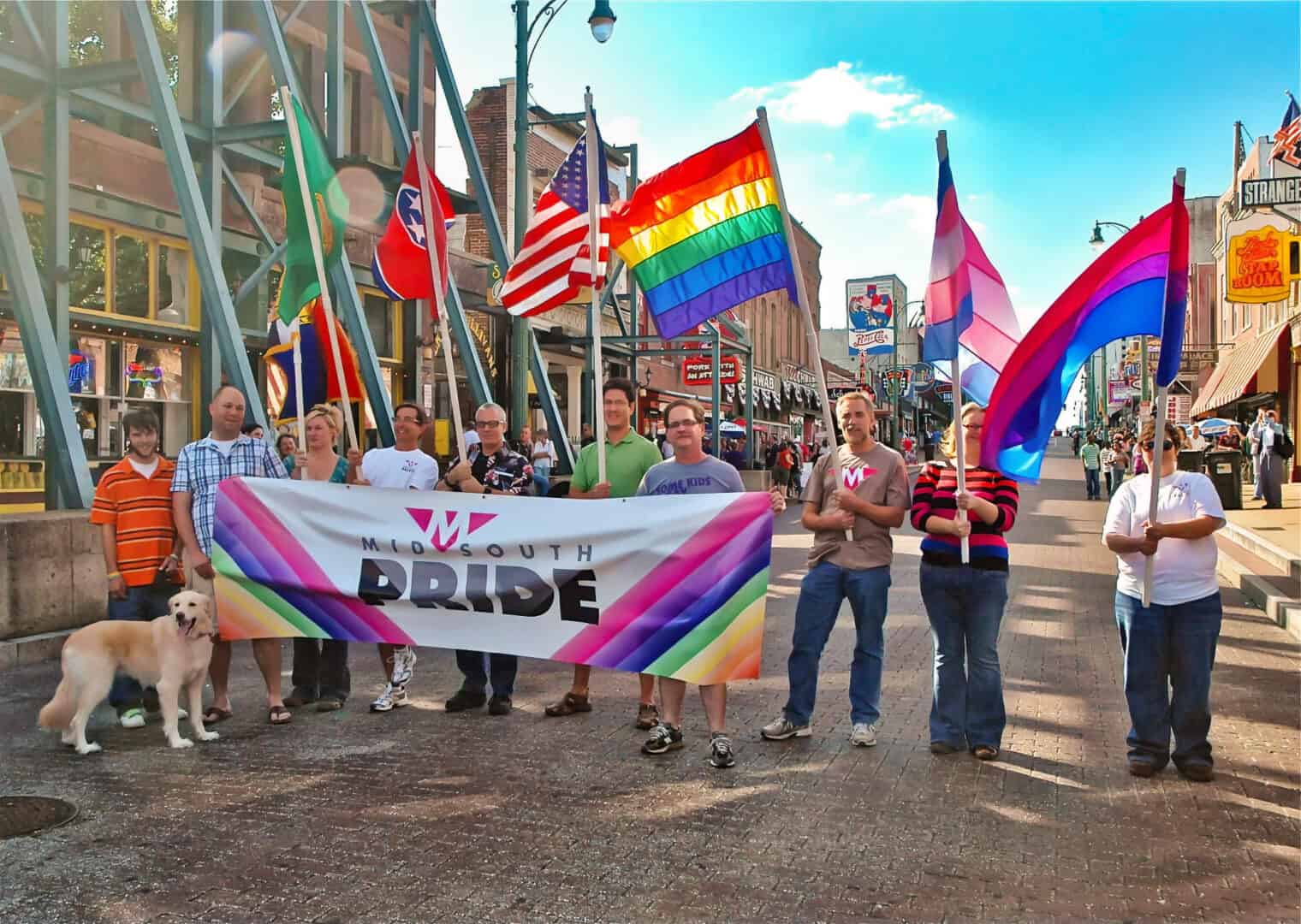On October 22, 2011, Memphis Pride made history by moving its annual festival and parade to Beale Street, marking a new era of visibility and inclusion for the LGBTQ+ community. The relocation from Midtown to downtown signaled a shift in how the city embraced Pride—no longer confined to a smaller neighborhood festival, it now took center stage in one of Memphis’s most iconic and public spaces.
With the theme “Pride by the River,” the event drew record-breaking crowds, bringing together locals, tourists, and allies under the neon lights and historic landmarks of Beale Street. This move placed Pride within walking distance of the National Civil Rights Museum, emphasizing the intersections between LGBTQ+ rights and the broader civil rights movement. The symbolism of marching through a district with deep ties to Memphis’s African American history reinforced the shared struggles for equality, recognition, and justice.
The 2011 Grand Marshals reflected the event’s commitment to advocacy and representation. Dr. Marisa Richmond, the first openly transgender public official in Tennessee, brought decades of LGBTQ+ activism and policy advocacy to the celebration. Lisa Kurts Crume, a key supporter of LGBTQ+ representation in the arts, had long worked to create inclusive cultural spaces. Deb Word, a champion for homeless LGBTQ+ youth, was honored for her dedication to providing shelter, resources, and mentorship to young people estranged from their families.
The festival showcased the diversity of Memphis’s LGBTQ+ community with live music, performances, and vendors. Local advocacy groups used the public platform to raise awareness about marriage equality, anti-discrimination protections, and LGBTQ+ health services. The event’s increased scale also encouraged businesses, organizations, and institutions to engage more visibly with the LGBTQ+ community.
The move to Beale Street wasn’t just a logistical change—it was a declaration. Memphis Pride had stepped out of the shadows and into the heart of the city, demanding recognition, respect, and inclusion. The success of 2011’s Pride set the stage for even greater participation in the years to come, ensuring that LGBTQ+ Memphians would always have a place to march, celebrate, and be seen.
